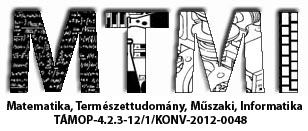Photodynamic therapy of actinic keratosis - Case presentations
Abstract data
Photodynamic therapy (PDT) is a minimally invasive therapeutic method for treating different skin diseases. Its effect is based on that the hyperproliferative cells synthesize higher amount of protoporphyrin IX (PPIX) after topical application of 5-aminolevulinic acid (5-ALA). The formed PPIX can be activated by light induced photodynamic reaction generating reactive oxygen species. It also has violet fluorescence under UVA, which is useful to determine the margin of the target.
AK is a premalignancy which is caused by chronic sun damage (field cancerization). PDT is an ideal method for treating AK because it can be used to treat a wide skin area without the need of multiple excisions. It is a worldwide applied method in dermatology, but its use is restricted in our country because it is not financed by the national insurance company.
We aimed therefore to establish PDT of AK at the Department of Dermatology in Debrecen with recording our own experience of the efficacy and safety.
For an effective PDT, the proper amount of PPIX needs to be applied on a properly prepared surface for an appropriate time. 20% 5-ALA is applied for 4 hours under occlusive dressing. After that the target is irradiated with Hydrosun 501 (water filtered visible and infrared light) for 30 minutes or until the patient complains of intolerable pain. 3 patients were invited for our pilot study. The first patient had AK on the forearms, the other two patients had AK on their scalp. Treating the first patient was uncomplicated, the therapeutic effect was moderate. The second patient complained severe pain and the treatment had to be terminated. We observed pronounced erythema after the treatment with a consequent satisfactory therapeutic effect. Finally, the third patient complained about moderate pain. According to our experience the improvement was also moderate in his case.
In summary, we established PDT for treating AK in our department with promising results. In conjunction with the literature the major disadvantage of this method is the absence of histology. The major limitation of the effectiveness is the thickness of the pathological tissue and also pain management can be challenging.
Támogatók: Támogatók: Az NTP-TDK-14-0007 számú, A Debreceni Egyetem ÁOK TDK tevékenység népszerűsítése helyi konferencia keretében, az NTP-TDK-14-0006 számú, A Debreceni Egyetem Népegészségügyi Karán folyó Tudományos Diákköri kutatások támogatása, NTP-HHTDK-15-0011-es A Debreceni Egyetem ÁOK TDK tevékenység népszerűsítése 2016. évi helyi konferencia keretében, valamint a NTP-HHTDK-15-0057-es számú, A Debreceni Egyetem Népegészségügyi Karán folyó Tudományos Diákköri kutatások támogatása című pályázatokhoz kapcsolódóan az Emberi Erőforrás Támogatáskezelő, az Emberi Erőforrások Minisztériuma, az Oktatáskutató és Fejlesztő Intézet és a Nemzeti Tehetség Program



